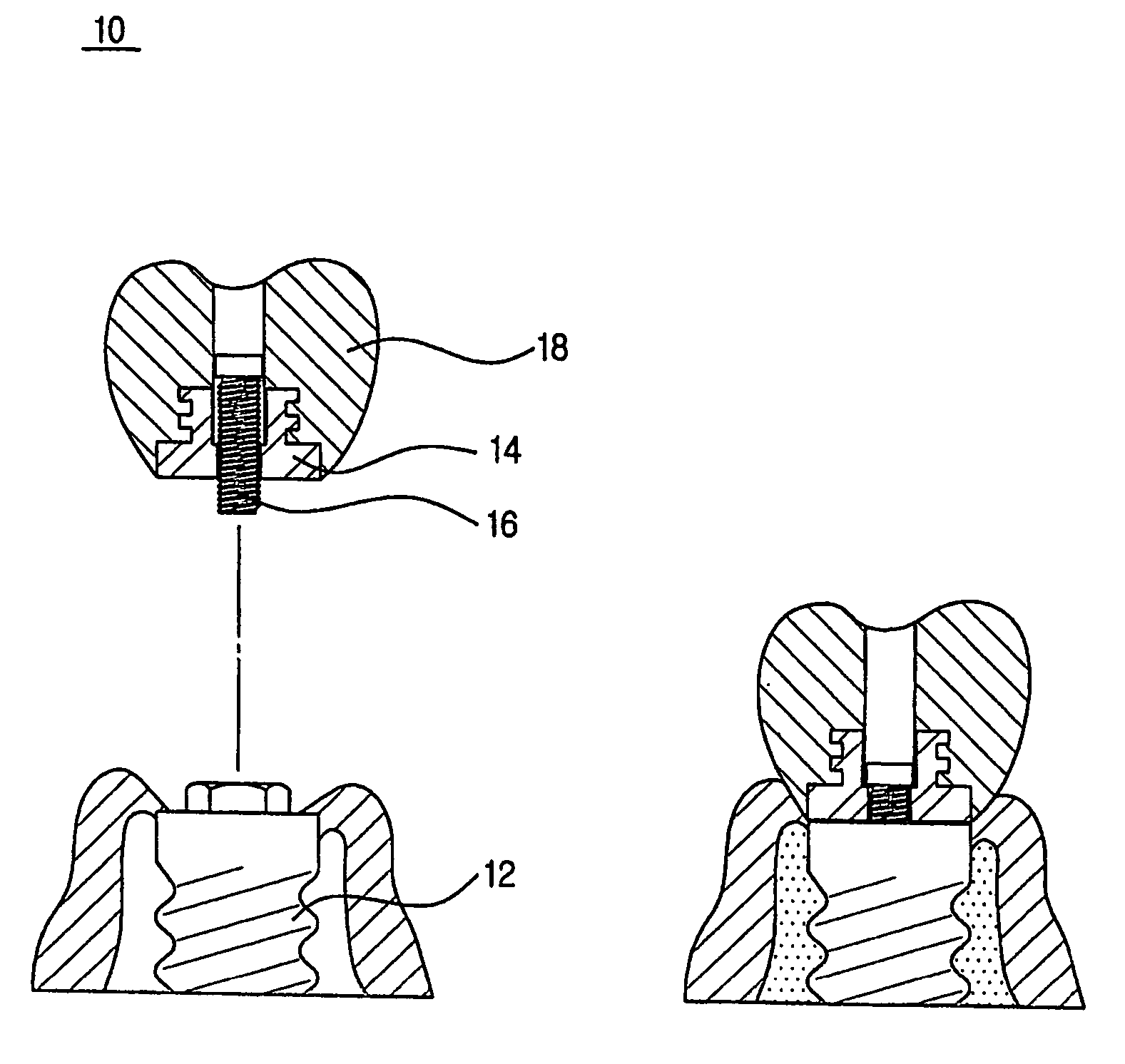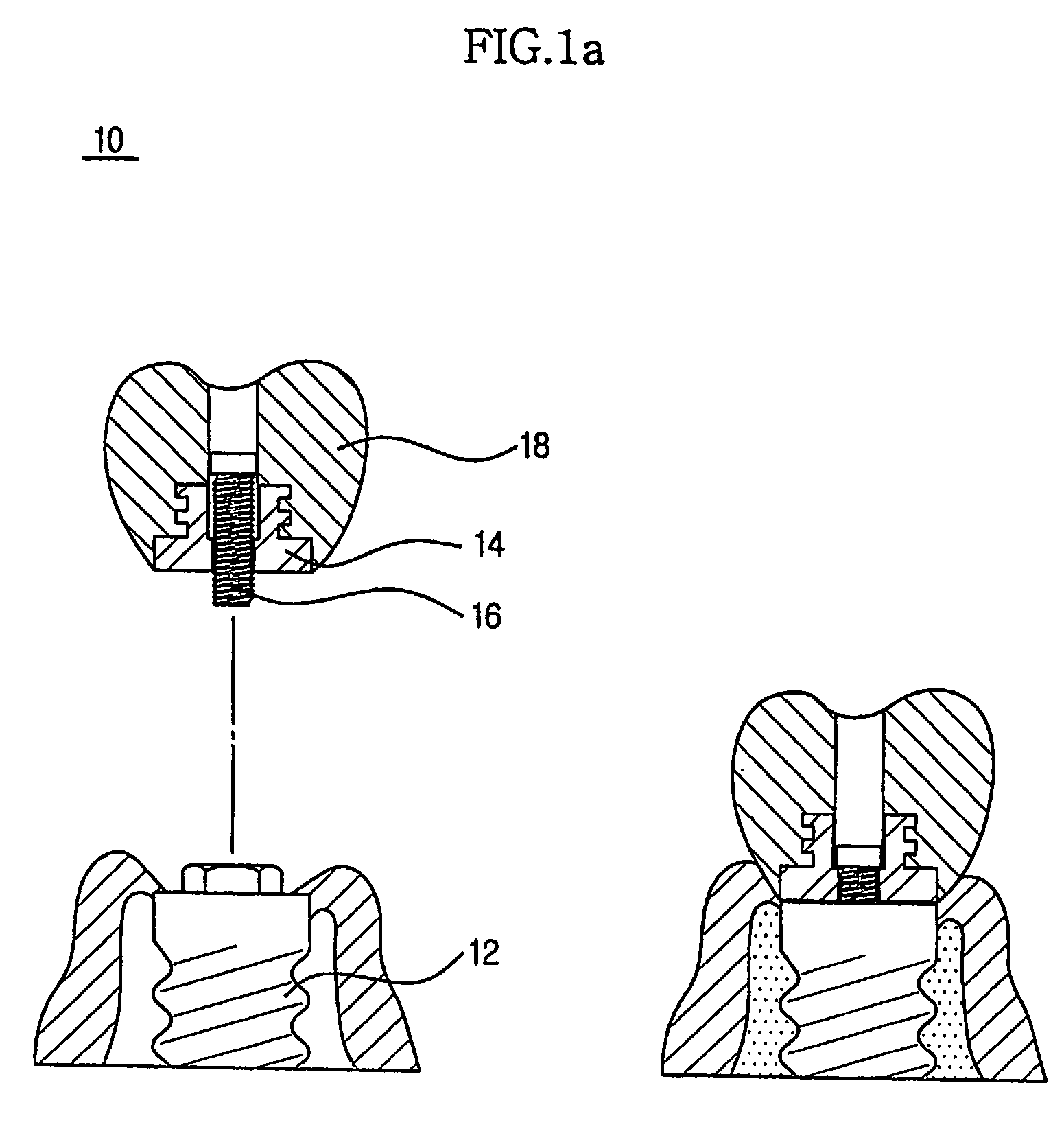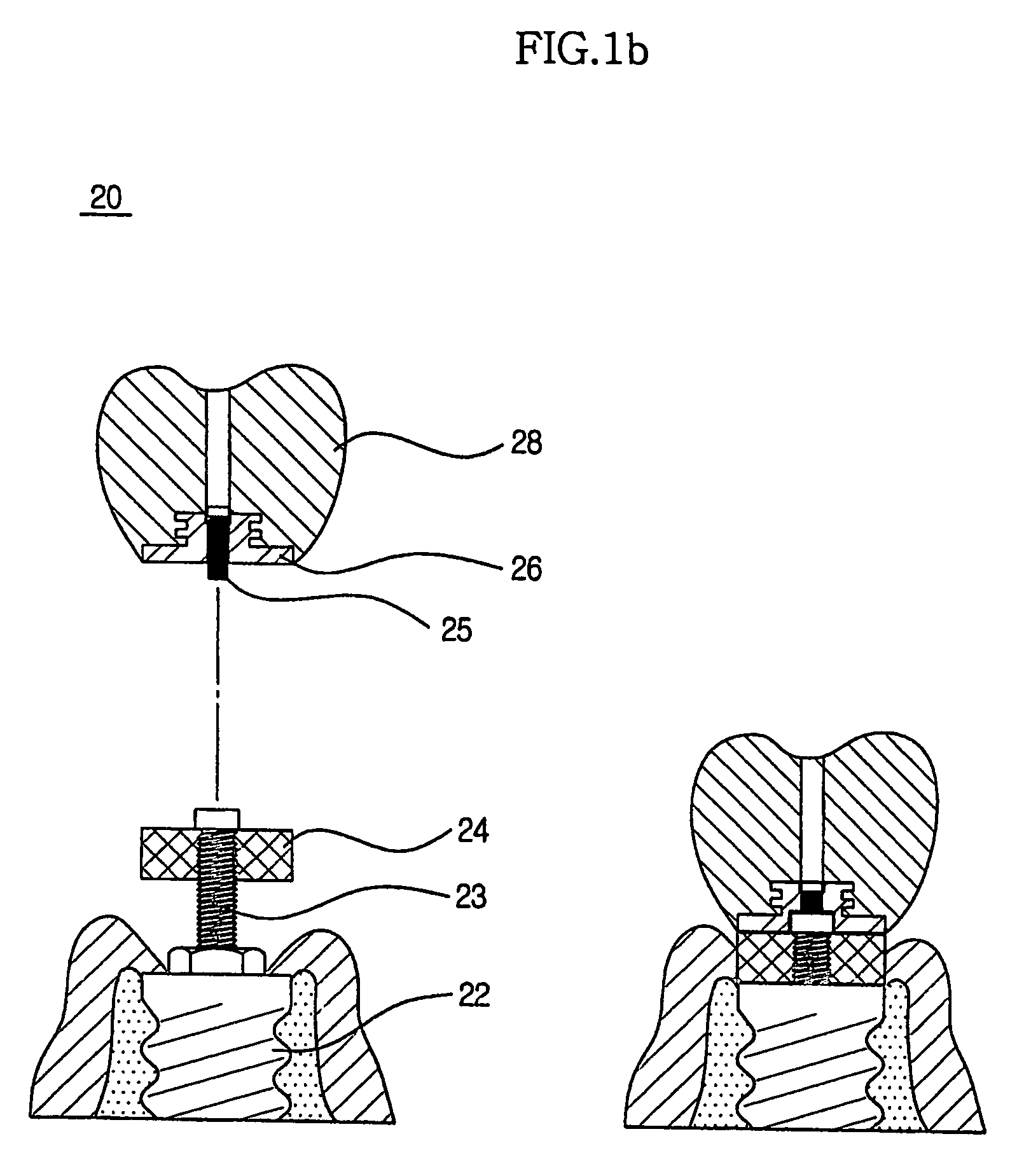Method for treating a screw-cement retained prosthesis and adjustment for a screw-cement retained prosthesis
- Summary
- Abstract
- Description
- Claims
- Application Information
AI Technical Summary
Benefits of technology
Problems solved by technology
Method used
Image
Examples
embodiment 1
[0075]FIG. 3 is a sectional view of an SCRP implant according to Embodiment 1 of the present invention, and FIGS. 4a to 4f are sectional views for explaining a method for treating the SCRP implant according to Embodiment 1.
[0076] Referring to FIG. 3, the SCRP implant 100 according to Embodiment 1 comprises a fixture 110, an abutment 120, a screw 140 and a prosthetic appliance 150.
[0077] The fixture 110 comprises the thread 114 formed in its outer surface and is implanted along the thread 114 to the alveolar bone. The thread 114 of the implanted fixture 110 is fused with tissue of the alveolar bone and then is fixed to the alveolar bone. Generally, considerable time is needed for bonding the thread 114 and the alveolar bone to each other.
[0078] A hexagonal cylindrical joining projection 112 is formed on the upper surface of the fixture 110, in which a thread hole corresponding to a screw 130 is formed along the centerline of the joining projection 112.
[0079] An abutment 120 compr...
embodiment 2
[0102]FIG. 5a is a sectional view of an SCRP implant according to Embodiment 2 of the present invention, and FIG. 5b is a sectional view for explaining a separating process of the SCRP implant according to Embodiment 2.
[0103] Referring to FIG. 5, the SCRP implant according to Embodiment 2 comprises the fixture 110, an abutment 120, the screw 130 and the prosthetic appliance 160. The fixture 110, screw 130 and prosthetic appliance 160 except the abutment 120 may refer to the explanations and drawings of Embodiment 1, and repetitional contents may be omitted.
[0104] The fixture 110, the abutment 120 and the screw 130 except a prosthetic appliance 160 may refer to the explanation and drawings of Embodiment 1, and repetitive description may be omitted.
[0105] The hexagonal cylindrical joining projection 112 is formed on the upper surface of the fixture 110, in which a thread hole corresponding to the screw 130 is formed along the centerline of the joining projection 112. The abutment 1...
embodiment 3
[0113]FIG. 7 is a partial sectional view of an SCRP prosthesis for explaining the example of using an abutment for the SCRP prosthesis according to Embodiment 3 of the present invention; FIG. 8 is a bottom partially cutaway perspective view of the abutment of FIG. 7; and FIG. 9 is a bottom view of the abutment of FIG. 7. A prosthesis and an abutment 200 shown in FIGS. 7 to 9 are constituted by an external connection method. Explanation regarding the fixture 110 and the screw 130 may refer to the explanation and drawings of Embodiment 1, and repetitive description may be omitted.
[0114] Referring to FIGS. 7 to 9, the prosthesis comprises the fixture 110, the abutment 200 and the screw 130.
[0115] The fixture 110 comprises a thread 114 formed on an outer surface thereof and is implanted into the alveolar bone along the thread 114. On the upper surface of the fixture 110, the hexagonal cylindrical joining projection 112 is formed. A thread hole is formed along the axial line of the joi...
PUM
 Login to View More
Login to View More Abstract
Description
Claims
Application Information
 Login to View More
Login to View More - R&D
- Intellectual Property
- Life Sciences
- Materials
- Tech Scout
- Unparalleled Data Quality
- Higher Quality Content
- 60% Fewer Hallucinations
Browse by: Latest US Patents, China's latest patents, Technical Efficacy Thesaurus, Application Domain, Technology Topic, Popular Technical Reports.
© 2025 PatSnap. All rights reserved.Legal|Privacy policy|Modern Slavery Act Transparency Statement|Sitemap|About US| Contact US: help@patsnap.com



